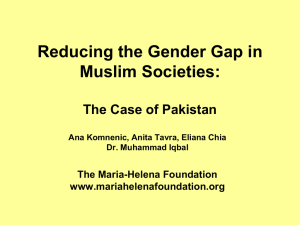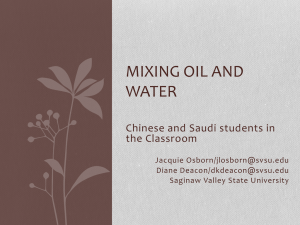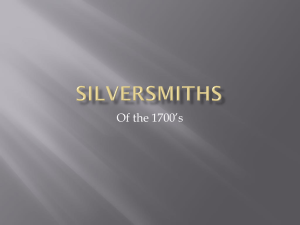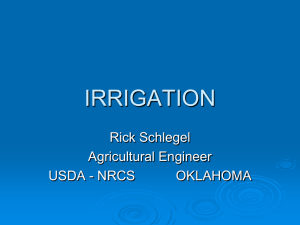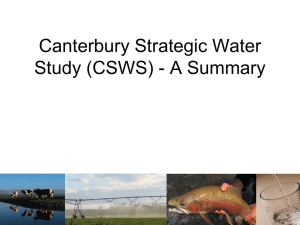Southwest Asia: Human Environment Interaction
advertisement
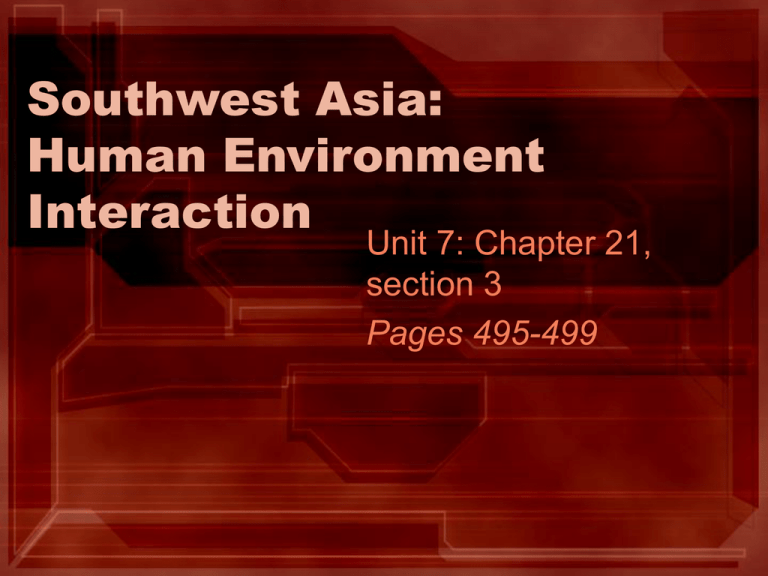
Southwest Asia: Human Environment Interaction Unit 7: Chapter 21, section 3 Pages 495-499 Today’s Objectives The student is expected to: 1. Examine the procurement and distribution of water resources in Southwest Asia. 2. Describe the formation, production and movement of oil in the region. Main Ideas • Water is critical to regional physical survival and economic development. http://en.wikipedia.org/wiki/Qanat • Discovery of oil increased the global economic importance of Southwest Asia. http://en.wikipedia.org/wiki/Image:ShellMartinez-refi.jpg#file Fresh Water • Most critical resource in region • Available in small amts & w/o consistent supply • Sound: http://www.grsites.com Dams & Irrigation Systems • Lg. pop. Lg. scale farming • Farming requires irrigation • H2O for irrigation comes from man-made lakes created by dams • Dams also provide hydroelectricity Ataturk Dam, Turkey http://www.adiyamanli.org/ataturk_dam.htm Controversy Over Water • Countries downstream from the dam lose the use of the water for irrigation or hydroelectricity. • Land is lost by rising water behind the dam • Land downstream no longer receives river’s sediment http://www.adiyamanli.org/ataturk_dam.htm Water Systems • Drip Irrigation: small pipes/hoses that slowly drip water just above the ground to conserve water used for crops. • http://en.wikipedia.org/wiki/Drip_irrigation Water Systems Irrigation canal Noria water wheel used to lift water from river to fields Qanat underground bricklined tunnels http://en.wikipedia.org Modern Water Technology • Desalinization: removal of salt from ocean water, done at a technically sophisticated water treatment plant. • However, some desalinated water may be too salty for irrigation, so it’s used in sewage systems & industrial uses. • http://www.gewater.com/images/multimedia /desal/main_ie.html (intro only) Oil from the Sand • SW Asia contains ~1/2 of all the world’s petroleum reserves. • Petroleum products are an important part of the world’s economy. • SW Asia is a VERY important region economically. http://maps101.com/Application/Catalog/Product.aspx?cid=60&pid=1100 Forming Petroleum • Formed millions of years ago when an ancient sea covered SW Asia. • Microscopic plants & animals lived in the sea & died in the water. • Remains sank into the mud below. • Pressure & heat transformed the material into hydrocarbons, the chemical basis of oil & natural gas. • Oil & nat. gas are trapped in the microscopic pores of rock. • • • • • • Middle East All-Operations Facts: http://www.chevron.com/operations/middle_east/map.asp 1: Saudi Arabia — Company recorded first Saudi Arabia oil discovery in 1938. 2: Kuwait — Discovered Kuwait's Burgan Field, world's second-largest, in 1938. Technical Services Agreement assures continued technology progress. 3: Saudi Arabia and Kuwait — In the onshore Partitioned Neutral Zone between Saudi Arabia and Kuwait, crude oil total production has reached 3 billion barrels. 4: Saudi Arabia — At Al Jubail, built the Kingdom's first privately financed major petrochemical plant 5: Bahrain — Bahrain's first oil discovery in 1932. 6: Qatar — Qatar activities include world-scale polyethylene complex and five-year onshore exploration. Transporting Oil • Crude Oil pumped from the ground must be moved to the refinery. • Pipelines transport the crude oil to refineries or ports where oil is refined. • Lines are located near existing ports or other transportation markets, especially the Persian Gulf, Red Sea and Med. Sea. http://en.wikipedia.org/wiki/Pipeline_transport Risks of Transporting Oil • 1991January 26 - KUWAIT - An estimated 240 million gallons of oil were spilled from terminals, tankers and oil wells during the final phase of the Iraqi invasion of Kuwait. • http://www.marinergroup.com/oil-spill-history.htm; http://en.wikipedia.org/wiki/Oil_spill Check for Understanding Copy & answer these questions: 1. What is the most critical resource in SW Asia? 2. What are some ways water is supplied? 3. Why might transporting oil be risky?



